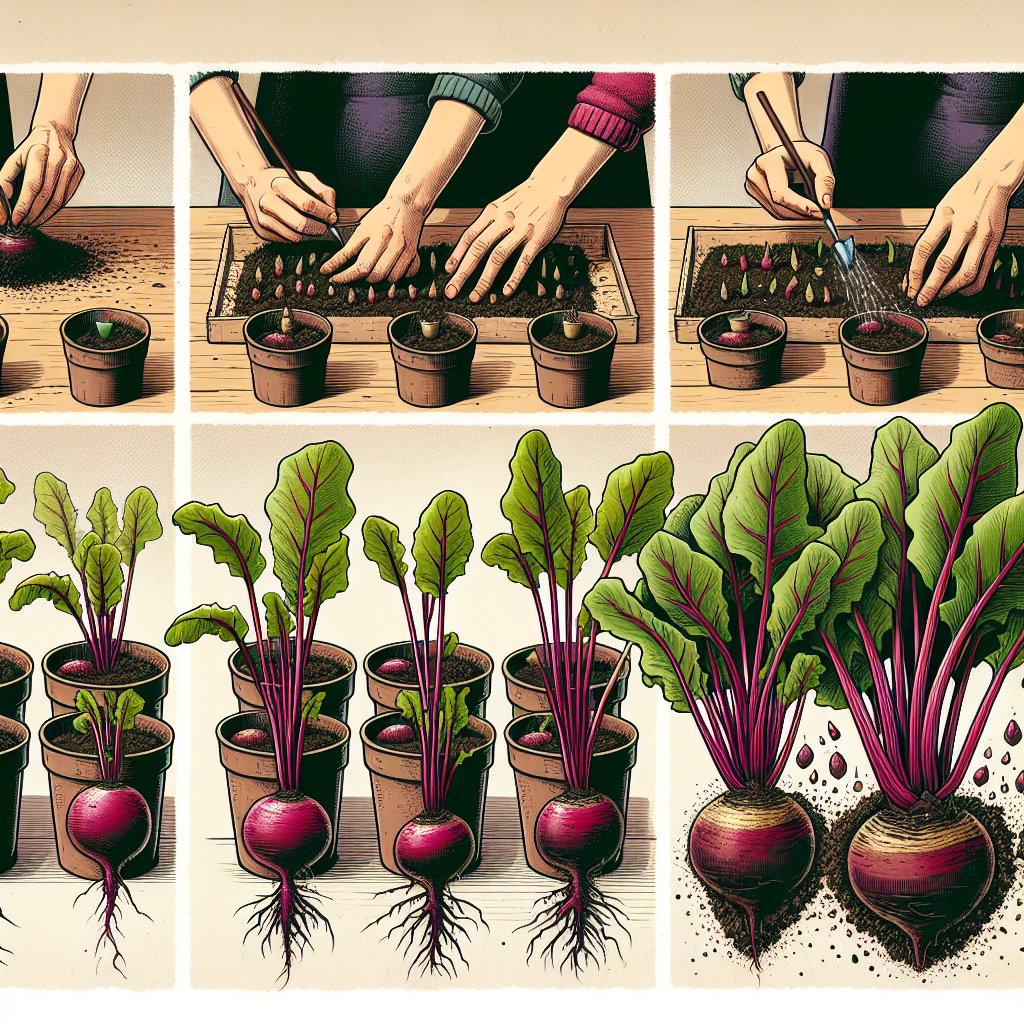
How to grow beets from seed in containers
How to Grow Beets from Seed in Containers: A Comprehensive Guide
Growing your own vegetables can be a rewarding experience, especially when it comes to nutrient-rich options like beets. If you're limited on space or simply prefer the convenience of container gardening, you're in luck! This article will guide you on how to grow beets from seed in containers, ensuring that you can enjoy fresh, home-grown beets right from your balcony or patio.
Understanding Beets
Beetroots, commonly known as beets, are versatile vegetables that can be consumed raw, pickled, roasted, or used in salads. They thrive in cooler temperatures and are generally a hardy crop, making them a perfect option for container gardening. Here’s what you need to know before diving into growing them:
- Varieties: There are several varieties of beets including red, golden, and striped beets.
- Growing Period: Beets typically take 50 to 70 days from sowing to harvest, depending on the variety.
- Container Size: Choose a container that is at least 12 inches deep and wide, allowing enough room for the beets to grow.
Choosing the Right Container
The success of your beet-growing adventure largely depends on choosing the right container. Here are some suggestions:
Size Matters
Beets have a substantial root system, so it's crucial to select a container that is deep enough to accommodate their growth. Ideally, choose a container that is:
- At least 12 inches (30 cm) deep
- Wide enough to accommodate multiple seeds, about 12 to 16 inches (30 to 40 cm)
Material Types
Containers can be made from various materials. Here’s a quick overview:
- Plastic: Lightweight, affordable, and retains moisture well.
- Wood: Offers excellent aeration; however, untreated wood may rot over time.
- Metal: Stylish but can heat up quickly; ensure proper drainage.
Preparing to Plant
Now that you have your container, it’s time to prepare for planting. Below are the necessary steps to prepare your container for growing beets.
Soil Requirements
Beets prefer well-draining soil that is rich in organic matter. To create the ideal potting mix:
- Combine equal parts of potting soil, compost, and perlite or vermiculite to enhance drainage.
- Ensure that the mixture is fluffed and free from clumps for optimal root development.
Choosing Seeds
Selecting the right beet variety is essential for success. Here are some popular choices:
- Detroit Dark Red: A classic variety known for its sweet flavor.
- Golden Beet: This variety has a mild taste and vibrant color.
- Candy Stripe Beet: A visually appealing option with sweet, striped flesh.
When buying seeds, look for a reputable supplier to ensure germination success. Genuinely, seeds should be fresh and properly labeled.
Planting Beets in Containers
Now comes the exciting part—planting your beets! Follow these steps for best results:
Sowing Seeds
When you're ready to plant, ensure the following:
- Fill the container with the prepared potting mix, leaving about 1 inch from the top for watering.
- Moisten the soil slightly before planting to help seeds settle in.
- Sow seeds about 1 inch apart, approximately ½ inch deep.
Spacing Considerations
Beets can be grown in clusters, but it's vital to thin them as they grow to allow for healthy root expansion. Here's how to manage spacing:
- If planting multiple seeds, aim to thin to one seedling every 3 to 4 inches as they sprout.
- Thinning should occur when seedlings are about 2 inches tall.
Caring for Your Container Beets
Once planted, beets require some care to thrive. Below are essential care practices you should follow:
Watering
Beets need consistent moisture but dislike waterlogged conditions. Here’s a basic guideline for watering:
- Water once or twice a week, ensuring the soil is moist but not soggy.
- During hotter days, monitor the soil daily and adjust watering as needed.
Fertilization
Feeding your beets will encourage healthy growth. Use a balanced fertilizer or organic options:
- Apply a slow-release fertilizer when planting.
- Fertilize every four weeks throughout the growing season.
Controlling Pests and Diseases
While beets are generally resilient, they can be susceptible to certain pests and diseases. Here’s how to manage them:
Common Pests
- Leaf miners: These can create tunnels in the leaves. Remove affected leaves to prevent spread.
- Aphids: Regularly check for these tiny pests; a strong spray of water can help dislodge them.
Disease Prevention
- Rotate crops each season to minimize disease and pest buildup.
- Avoid overhead watering to prevent fungal infections.
Harvesting Beets
One of the most rewarding aspects of gardening is the harvest. Here’s how to know when your beets are ready:
- Generally, beets are ready to harvest when they reach about 1.5 to 3 inches in diameter.
- Check the top of the root—if it’s just above the soil, it’s time to pull them up.
- Use a garden fork to gently loosen the soil around the beets, making it easier to pull them out.
Post-Harvest Care
After harvesting, it’s essential to handle the beets carefully to prevent bruising:
- Trim the tops and roots, leaving about 1 inch of greens to maintain freshness.
- Store in a cool, dark place; they can last for weeks in the right conditions.
Conclusion
Growing your own beets in containers can be an enjoyable and fruitful endeavor. This versatile vegetable adds flavor, color, and nutrition to your meals, and with the right care, you can successfully cultivate them right at home. Remember to choose a suitable container, prepare the soil, monitor your plants, and adhere to good gardening practices. By following this guide on how to grow beets from seed in containers, you'll be well on your way to enjoying fresh, healthy beets in no time!
“To plant a garden is to believe in tomorrow.” – Audrey Hepburn
By Guest, Published on September 26th, 2024